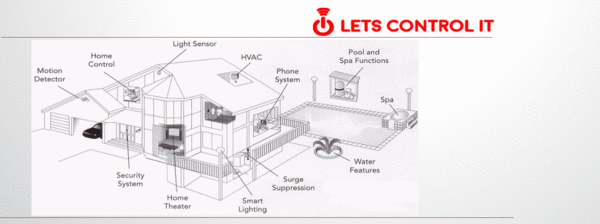Hello everybody,
today I would like to briefly introduce another firmware for the ESP8266 controller: ESP-Easy.
We already know the standard firmware from Espressif with LUA, the AT firmware or also ArduinoCore. ESP Easy is mainly aimed at beginners, but is also suitable for implementing hardware concepts at short notice and is now quite popular in the smart home sector. As out-of-the-box software, many sensors can be tested, read out and then published.
ESP Easy is available in several versions, the current version is called Mega and contains all tools and experimental functions which can however negatively influence the stability. So today I want to show how to compile the firmware yourself and then load it on your controller. We use Platform.IO and choose version 2.0.
How to install and use Platform.IO we have already shown in previous posts.
So we start with the download of the firmware, which is available here:
https://github.com/letscontrolit/ESPEasy/tree/v2.0
Download the directory as usual via/with GitHub and unzip it to Documents\PlatformIO\Projects. Then launch VisualStudioCode with PlatformIO and open the project folder:

Then navigate to platformio.ini and comment out the versions you don't need, for our example we use the normal version for 4096k memory:

For simple commenting out you can mark the respective place and open the command palette with the right mouse button:

Then the command palette opens, select "Add line comment" here

Or also "Toggle line comment" and the marked area will be commented out:

Now all entries in the platformio.ini should be commented out except for the two areas shown in the screenshot. Now we are ready to compile, press the check mark in the small blue bar: PlatformIO:Build. If the process aborts with an error:

you can ignore it and just compile it again, the code will run through:

Now you can start the flash process, we use a NodeMCU Amica V2 this time:

Afterwards the controller reboots and is ready for configuration in AP mode, the password for the AP is "configesp".

When you have successfully connected to the network, you can configure your controller. The Config page of the ESP should open automatically. If this is not the case, you can manually navigate to http://192.168.4.1. If you do not get access to the web interface you can restart the controller and connect again, note that the board needs some time to initialize everything at the first start.

Now enter the desired WLAN. When the controller is restarted, it logs into the entered network and can be reached via its DHCP address.
The firmware is quite well documented, there are many tutorials for the different sensors. The data is usually transferred to a web server or sent via MQTT.
The complete documentation can be found here
In a following article we will connect a sensor and implement a temperature alarm with a BME, so it remains exciting...
Until the next post :)











4 comments
calade
Blog post is outdated, ESP easy release is dropped since 2018 !
Screen pics are unreadable, even in larger scale…
Post should be removed or updated with ESP Easy Mega version and proper screenshots.
Thanks,
Jens
Ich bekomme ich die selbe Meldung wie Sprollonis.
Hat jemand dafür eine Lösung?
error: Server does not allow request for unadvertised object 159e31b689577dbf69cf0683bbaffbd71fa5ee10
Fetched in submodule path ‘tools/sdk/lwip2/builder/lwip2-src’, but it did not contain 159e31b689577dbf69cf0683bbaffbd71fa5ee10. Direct fetching of that commit failed.
Submodule path ‘tools/sdk/ssl/bearssl’: checked out ‘89454af34e3e61ddfc9837f3da5a0bc8ed44c3aa’
Failed to recurse into submodule path ‘tools/sdk/lwip2/builder’
Error: VCS: Could not process command [‘git’, ‘clone’, ‘—recursive’, ‘—depth’, ‘1’, ‘—branch’, ‘2.6.3’, ‘https://github.com/esp8266/Arduino.git’, ‘C:\\Users\\Admin\\.platformio\\packages\\_tmp_installing-j1h8ehor-package’]
The terminal process terminated with exit code: 1
Sprollonis
Hallo,
danke erst mal für den super Beitrag. Bekomme beim compilieren eine Fehlermeldung von Git.
error: Server does not allow request for unadvertised object 159e31b689577dbf69cf0683bbaffbd71fa5ee10
Fetched in submodule path ‘tools/sdk/lwip2/builder/lwip2-src’, but it did not contain 159e31b689577dbf69cf0683bbaffbd71fa5ee10.
Direct fetching of that commit failed.
Submodule path ‘tools/sdk/ssl/bearssl’: checked out ‘89454af34e3e61ddfc9837f3da5a0bc8ed44c3aa’
Failed to recurse into submodule path ‘tools/sdk/lwip2/builder’
Error: VCS: Could not process command [‘git’, ‘clone’, ‘—recursive’, ‘—depth’, ‘1’, ‘—branch’, ‘2.6.3’, ‘https://github.com/esp8266/Arduino.git’, ‘C:\\Users\\marti\\.platformio\\packages\\_tmp_installing-b1xzjwa2-package’]
Der Terminalprozess wurde mit folgendem Exitcode beendet: 1
Einige Versuche mit git-Befehlen habe ich schon hinter mir – leider ohne Erfolg.
Wenn ich es recht verstehe, fehlt ein object auf dem Server – da ich aber neu mit Git und Platformio bin, fehlt mir noch ein wenig das Verständnis.
Möglicherweise gibt es eine einfache Lösung
Danke
Martin Fitzke
Vielen Dank für den Beitrag. Ich habe schon ein bisschen in die Dokumentation geschaut und bin gespannt. Bis jetzt kannte ich nur das WiFi Monitor Projekt, das man zu eigenem Code dazu basteln kann.
Viele Grüße und eine prima Woche,
M. Fitzke